#fashion changes
Text

Some genius fixed it
3 notes
·
View notes
Text
You know how Aziraphale always wears clothes that have been out of fashion for at least a hundred years and Crowley just miracles himself up whatever he thinks is modern, right?
So why on earth is he wearing sleeve garters in 2023 then?
(Not that I’m complaining..)
You can just see them when he turns here ⬇️

For me the answer is clearly either:
because he thinks it’s hot
or (better):
because he thinks Aziraphale thinks it’s hot
(Bonus option: they are part of his bookseller cosplay)
#you can’t change my mind#also why is that shirt so unbuttoned?#Anthony j Crowley’s fashion choices#good omens#crowley#ineffable husbands#aziraphale#ineffable spouses
4K notes
·
View notes
Text





10 years in the future for Nanako-chan
#nanako dojima#persona 4#yu narukami#ryotaro dojima#tohru adachi#a little sister... a LITTLw sister. you expect me to not fawn...? to not crumble? ok....#go on. look....... go on. GO ON!!!!! (crazed) (eye twitching) (i like these 4 and nana-chan especially)#hope you like my older design for her...#funfacts i said on twitter so i'll put on tags here:#adachi did his time in jail quick. yu's 27 and still looks the same. pretty bancho#i think nanakos signature color would change from pink to yellow. yu doesn't actually wear any yellow at all in p4g IIRC#but it is a color you associate him with the most. i want nanako to adopt that color. BUUUTTT#for self indulgent's sake she does wear pink to get yu to dote on her more. (reminds him fondly of baby nana-chan)#(AGHHHHHHHHHHHHHHHHHHHHHHH!)#oh yeah and adachi's a hag. i think his fashion is handpicked by yu probaably.#(thinking if i missed anything else) ahhhh........... nanako-chan... return for p6 or something. ok byeee!
2K notes
·
View notes
Text


boncas throwback
#the boncas... lives were Changed#dan and phil#daniel howell#danisnotonfire#amazingphil#phil lester#danandphilgames#dpgdaily#phan#dnp gifs#my gifs#gamingmas#gamingmas2023#boncas#Roasting our own Red Carpet Fashion#parallels
2K notes
·
View notes
Text
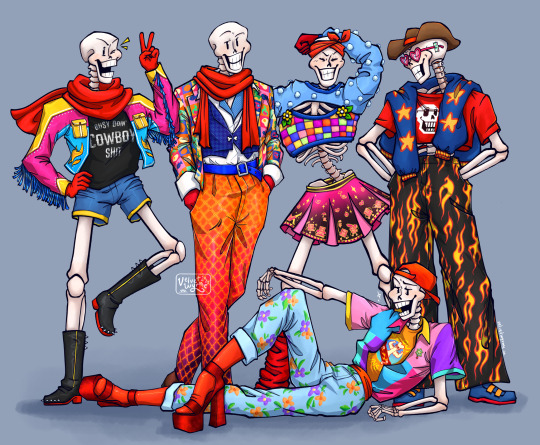
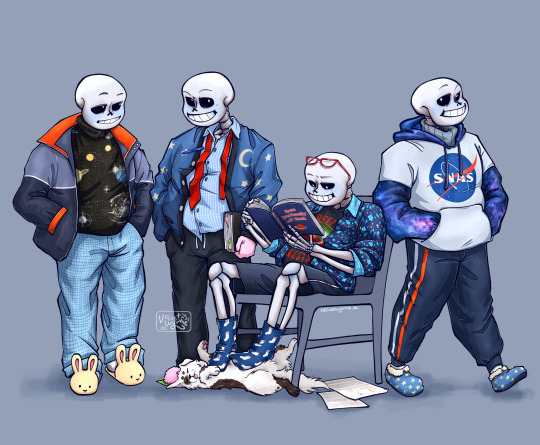
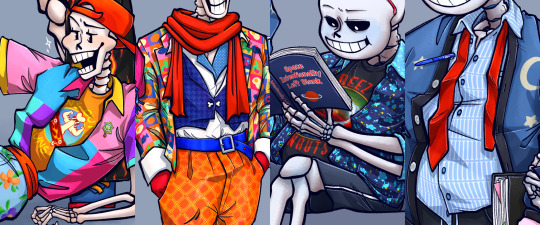
OUTFIT SET 2 of 4 // Undertale
The highly anticipated classic skelebros are here :D!!
(Extra notes under the cut! There are sooooo many details in this set)
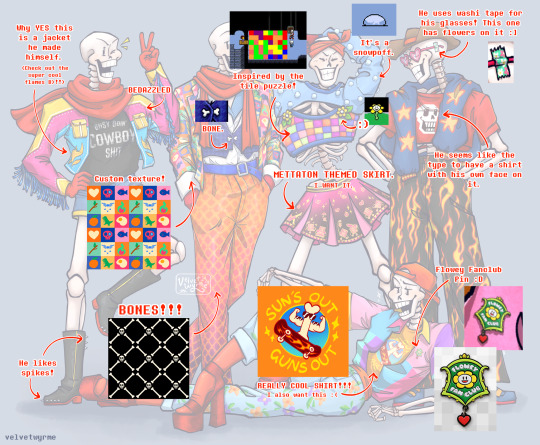

What's this?!! EVEN MORE NOTES??


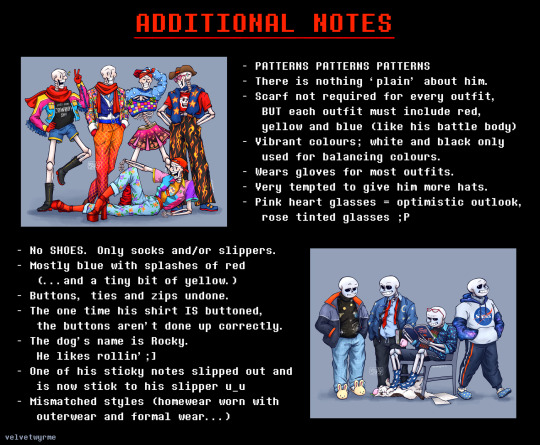
If you got this far, I hope you enjoyed reading my notes and design details! Thank you for reading 💛💛!!!
#undertale#sans#sans undertale#papyrus#papyrus undertale#fashion lineups#my art#have i ever mentioned that classic papyrus is the hardest for me to draw#idk what it is abt him. i love him so much and also i struggle SO much with drawing him abrjfvjbdks#anyway i think. trying to figure out his outfits (and making changes) made it so i took twice as long to draw his compared to sans' LMAO#tumblr is going to Crush my images but my god was it worth it
3K notes
·
View notes
Text
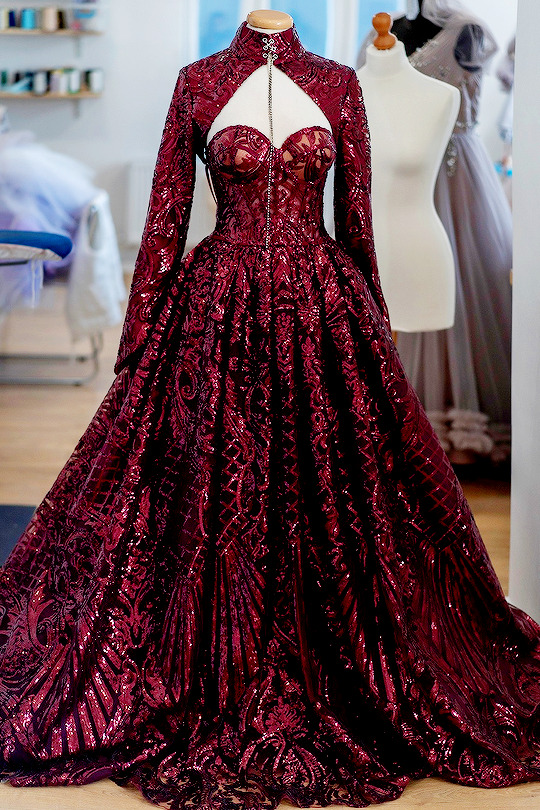

CHOTRONETTE 'Canelé De Bordeaux' Dress
if you want to support this blog consider donating to: ko-fi.com/fashionrunways
2K notes
·
View notes
Text

New video of David being interviewed on press day ahead of the BAFTAs while wearing a pink and green fuzzy sweater, the nonbinary rainbow pin, and pink platform Doc Martens and I am dying...
#david tennant#soft scottish hipster gigolo#the queerness is singeing my eyeballs#and it is glorious#also the interviewer is Scottish and they were so vibing#fashion queen David Tennant#there is no heterosexual explanation for this#but i love that he is slowly telling us who he is#and we can see the change in him on the inside and outside#amazing#the androgynous beauty of David Tennant#interview#baftas 2024
610 notes
·
View notes
Text
The Real Cost of the Fashion Industry

Atacama Desert, in Alto Hospicio, Iquique, Chile. (source)
The textile industry is destroying the world. The industry is wasting massive amounts of energy and materials, and polluting the air, the ground and the water supplies. It overwhelmingly exploits it's labour and extracts wealth from colonized countries, especially in Asia. I assume we all broadly understand this, but I think it's useful to have it all laid out in front of you to see the big picture, the core issues causing this destruction and find ways how to effectively move forward.
The concerning trend behind this ever-increasing devastation are shortening of trend cycles, lowering clothing prices and massive amount of wasted products. Still in year 2000 it was common for fashion brands to have two collections per year, while now e.g. Zara produces 24 collections and H&M produces 12-16 collections per year. Clothing prices have fallen (at leas in EU) 30% from 1996 to 2018 when adjusted to inflation, which has contributed to the 40% increase in clothing consumption per person between 1996 and 2012 (in EU). (source) As the revenue made by the clothing industry keep rising - from 2017 to 2021 they doubled (source) - falling prices can only be achieved with increasing worker exploitation and decreasing quality. I think the 36% degrees times clothing are used in average during the last 15 years (source) is a clear indication on the continuing drop in quality of clothing. Clothing production doubled between 2000 and 2015, while 30% of the clothes produced per year are never sold and are often burned instead (source), presumably to prevent the returns from falling due to oversupply.
These all factors are driving people to overconsume. While people in EU keep buying more clothes, they haven't used up to 50% of the clothes in their wardrobe for over a year (source). This overconsumption is only made much worse by the new type of hyper fast fashion companies like SHEIN and Temu, which are using addictive psychological tactics developed by social media companies (source 1, source 2). They are cranking up all those concerning trends I mentioned above.
Under the cut I will go through the statistics of the most significant effects of the industry on environment and people. I will warn you it will be bleak. This is not just a fast fashion problem, basically the whole industry is engaging in destructive practices leading to this damage. Clothing is one of those things that would be actually relatively easy to make without massive environmental and human cost, so while that makes the current state of the industry even more heinous, it also means there's hope and it's possible to fix things. In the end, I will be giving some suggestions for actions we could be doing right now to unfuck this mess.
Carbon emissions
The textile industry is responsible for roughly 10% of the global CO2 emissions, more than aviation and shipping industry combined. This is due to the massive supply chains and energy intensive production methods of fabrics. Most of it can be contributed to the fashion sector since around 60% of all the textile production is clothing. Polyester, a synthetic fiber made from oil which accounts for more than half of the fibers used in the textile industry, produces double the amount of carbon emissions than cotton, accounting for very large proportions of all the emissions by the industry. (source 1, source 2)
Worker exploitation
Majority of the textiles are produced in Asia. Some of the worst working conditions are in Bangladesh, one of the most important garment producers, and Pakistan. Here's an excerpt from EU Parliament's briefing document from 2014 after the catastrophic Rana Plaza disaster:
The customers of garment producers are most often global brands looking for low prices and tight production timeframes. They also make changes to product design, product volume, and production timeframes, and place last-minute orders without accepting increased costs or adjustments to delivery dates. The stresses of such policies usually fall on factory workers.
The wage exploitation is bleak. According to the 2015 documentary The True Cost less than 2% of all garment factory workers earned a living wage (source). Hourly wages are so low and the daily quotas so high, garment workers are often forced through conditions or threats and demand to work extra hours, which regularly leads to 10-12 hour work days (source) and at worst 16 hour workdays (source), often without days off. Sometimes factories won't compensate for extra hours, breaching regulations (source).
Long working hours, repetitive work, lack of breaks and high pressure leads to increased risks of injuries and accidents. Small and even major injuries are extremely common in the industry. A study in three factories in India found that 70% of the workers suffered from musculosceletal symptoms (source). Another qualitative study of female garment workers and factory doctors in Dhaka found that long hours led to eye strain, headaches, fatigue and weight loss in addition to muscular and back pains. According to the doctors interviewed, weight loss was common because the workers work such long hours without breaks, they didn't have enough time to eat properly. (source) Another study in 8 factories in India found that minor injuries were extremely common and caused by unergonomic work stations, poor organization in the work place and lack of safety gear, guidelines and training (source). Safety precautions too are often overlooked to cut corners, which periodically leads to factory accidents, like in 2023 lack of fire exists and fire extinguishers, and goods stacked beyond capacity led to a factory fire in Pakistan which injured dozens of workers (source) or like in 2022 dangerous factory site led to one dead worker and 9 injured workers (source).
Rana Plaza collapse in 2013 is the worst industrial accident in recent history. The factory building did not have proper permits and the factory owner blatantly ignored signs of danger (other businesses abandoned the building a day before the collapse), which led to deaths of 1 134 workers and injuries to 2 500 workers. The factory had or were at the time working for orders of at least Prada, Versace, Primark, Walmart, Zara, H&M, C&A, Mango, Benetton, the Children's Place, El Corte Inglés, Joe Fresh, Carrefour, Auchan, KiK, Loblaw, Bonmarche and Matalan. None of the brands were held legally accountable for the unsafe working conditions which they profited off of. Only 9 of the brands attended a meeting to agree on compensation for the victim's families. Walmart, Carrefour, Auchan, Mango and KiK refused to sight the agreement, it was only signed by Primark, Loblaw, Bonmarche and El Corte Ingles. The compension these companies provided was laughable though. Primemark demanded DNA evidence that they are relatives of one of the victims from these struggling families who had lost their often sole breadwinner for a meager sum of 200 USD (which doesn't even count for two months of living wage in Bangladesh (source)). This obviously proved to be extremely difficult for most families even though US government agreed to donate DNA kits. This is often said to be a turning point in working conditions in the industry, at least in Bangladesh, but while there's more oversight now, as we have seen, there's clearly still massive issues. (source 1, source 2)
One last major concern of working conditions in the industry I will mention is the Xinjiang raw cotton production, which is likely produced mainly with forced labour from Uighur concentration camps, aka slave labour of a suspected genocide. 90% of China's raw cotton production comes from Xinjiang (source). China is the second largest cotton producer in the world, after India, accounting 20% of the yearly global cotton production (source).
Pollution
Synthetic dyes, which synthetic fibers require, are the main cause of water pollution caused by the textile industry, which is estimated to account for 20% of global clean water pollution (source). This water pollution by the textile industry is suspected of causing a lot of health issues like digestive issues in the short term, and allergies, dermatitis, skin inflammation, tumors and human mutations in the long term. Toxins also effect fish and aquatic bacteria. Azo dyes, one of the major pollutants, can cause detrimental effects to aquatic ecosystems by decreasing photosynthetic activity of algae. Synthetic dyes and heavy metals also cause large amounts of soil pollution. Large amounts of heavy metals in soil, which occurs around factories that don't take proper environmental procautions, can cause anaemia, kidney failure, and cortical edoem in humans. That also causes changes in soil texture, decrease in soil microbial diversity and plant health, and changes in genetic structure of organisms growing in the soil. Textile factory waste water has been used for irrigation in Turkey, where other sources of water have been lacking, causing significant damage to the soil. (source)
Rayon produced through viscose process causes significant carbon disulphide and hydrogen sulphide pollution to the environment. CS2 causes cardiovascular, psychiatric, neuropsychological, endocrinal and reproductive disorders. Abortion rates among workers and their partners exposed to CS2 are reported to be significantly higher than in control groups. Many times higher amounts of sick days are reported for workers in spinning rooms of viscose fiber factories. China and India are largest producers of CS2 pollution, accounting respectively 65.74% and 11,11% of the global pollution, since they are also the major viscose producers. Emission of CS2 has increased significantly in India from 26.8 Gg in 2001 to 78.32 Gg in 2020. (source)
Waste
The textile industry is estimated to produce around 92 million tons of textile waste per year. As said before around 30% of the production is never sold and with shortening lifespans used the amount of used clothing that goes to waster is only increasing. This waste is large burned or thrown into landfills in poor countries. (source) H&M was accused in 2017 by investigative journalists of burning up to 12 tonnes of clothes per year themselves, including usable clothing, which they denied claiming they donated clothing they couldn't sell to charity instead (source). Most of the clothing donated to charity though is burned or dumbed to landfills (source).
Most of the waste clothing from rich countries like European countries, US, Australia and Canada are shipped to Chile (source) or African countries, mostly Ghana, but also Burkina Faso and Côte d'Ivoire (source). There's major second-hand fashion industries in these places, but most of the charity clothing is dumbed to landfills, because they are in such bad condition or the quality is too poor. Burning and filling landfills with synthetic fabrics with synthetic dyes causes major air, water and soil pollution. The second-hand clothing industry also suppresses any local clothing production as donated clothing is inherently more competitive than anything else, making these places economically reliant on dumbed clothing, which is destroying their environment and health, and prevents them from creating a more sustainable economy that would befit them more locally. This is not an accident, but required part of the clothing industry. Overproduction let's these companies tap on every new trend quickly, while not letting clothing the prices in rich countries drop so low it would hurt their profits. Production is cheaper than missing a trend.
Micro- and nanoplastics
There is massive amounts of micro- and nanoplastics in all of our environment. It's in our food, drinking water, even sea salt (source). Washing synthetic textiles accounts for roughly 35% of all microplastics released to the environment. It's estimated that it has caused 14 million tonnes of microplastics to accumulate into the bottom of the ocean. (source)
Microplastics build up into the intestines of animals (including humans), and have shown to probably cause cause DNA damage and altered organism behavior in aquatic fauna. Microplastics also contain a lot of the usual pollutants from textile industry like synthetic dyes and heavy metals, which absorb in higher quantities to tissues of animals through microplastics in the intestines. Studies have shown that the adverse effect are higher the longer the microplastics stay in the organism. The effects cause major risks to aquatic biodiversity. (source) The health effects of microplastics to humans are not well known, but studies have shown that they could have adverse effects on digestive, respiratory, endocrine, reproductive and immune systems. (source)
Microplastics degrade in the environment even further to nanoplastics. Nanoplastic being even smaller are found to enter blood circulation, get inside cells and cross the blood-brain barrier. In fishes they have been found to cause neurological damage. Nanoplastics are also in the air, and humans frequently breath them in. Study in office buildings found higher concentration of nanoplastics in indoor air than outdoor air. Inside the nanoplastics are likely caused mostly by synthetic household textiles, and outdoors mostly by car tires. (source) An association between nanoplastics and mitochondrial damage in human respiratory cells was found in a recent study. (source)
Micro and nano plastics are also extremely hard to remove from the environment, making it even more important that we reduce the amount of microplastics we produce as fast as possible.
What can we do?
This is a question that deserves it's own essays and articles written about it, but I will leave you with some action points. Reading about these very bleak realities can easily lead to overwhelming apathy, but we need to channel these horrors into actions. Whatever you do, do not fall into apathy. We don't have the luxury for that, we need to act. These are industry wide problems, that simply cannot be fixed by consumerism. Do not trust any clothing companies, even those who market themselves as ethical and responsible, always assume they are lying. Most of them are, even the so called "good ones". We need legislation. We cannot allow the industry to regulate itself, they will always take the easy way out and lie to their graves. I will for sure write more in dept about what we can do, but for now here's some actions to take, both political and individual ones.
Political actions
Let's start with political actions, since they will be the much more important ones. While we are trying to dismantle capitalism and neocolonialism (the roots of these issues), here's some things that we could do right now. These will be policies that we should be doing everywhere in the world, but especially rich countries, where most of the clothing consumption is taking place. Vote, speak to others, write to your representative, write opinion pieces to your local papers, engage with democracy.
Higher requirements of transparency. Right now product transparency in clothing is laughably low. In EU only the material make up and the origin country of the final product are required to be disclosed. Everything else is up to the company. Mandatory transparency is the only way we can force any positive changes in the production. The minimum of transparency should be: origin countries of the fibers and textiles in the product itself; mandatory reports of the lifecycle emissions; mandatory reports of whole chain of production. Right now the clothing companies make their chain of production intentionally complex, so they have plausible deniability when inevitably they are caught violating environmental or worker protection laws (source). They intentionally don't want to be able to track down their production chain. Forcing them to do so anyway would make it very expensive for them to keep up this unnecessarily complex production chain. These laws are most effective when put in place in large economies like EU or US.
Restrictions on the use of synthetic fibers. Honestly I think they should be banned entirely, since the amount of microplastics in our environment is already extremely distressing and the other environmental effects of synthetic fibers are also massive, but I know there are functions for which they are not easily replaced (though I think they can be replaces in those too, but that's a subject of another post), so we should start with restrictions. I'm not sure how they should be specifically made, I'm not a law expert, but they shouldn't be used in everyday textiles, where there are very easy and obvious other options.
Banning viscose. There are much better options for viscose method that don't cause massive health issues and environmental destruction where ever it's made, like Lyocell. There is absolutely no reason why viscose should be allowed to be sold anywhere.
Governmental support for local production by local businesses. Most of the issues could be much more easily solved and monitored if most clothing were not produced by massive global conglomerations, but rather by local businesses that produce locally. All clothing are made by hand, so centralizing production doesn't even give it advantage in effectiveness (only more profits for the few). Producing locally would make it much more easier to enforce regulations and it would reduce production chains, making production more effective, leaving more profits into the hands of the workers and reducing emissions from transportation. When the production is done by local businesses, the profits would stay in the producing country and they could be taxed and utilized to help the local communities. This would be helpful to do in both exploited and exploiter countries. When done in rich countries who exploit poorer ones, it would reduce the demand for exploitation. In poor countries this is not as easily done, since poor means they don't have money to give around, but maybe this could be a good cause to put some reparations from colonizers and global corporations, which they should pay.
Preventing strategic accounting between subsidiaries and parent companies. Corporate law is obviously not my area of expertise, but I know that allowing corporations to move around the accounting of profits and losses between subsidiaries and parent companies in roughly 1980s, was a major factor in creating this modern global capitalist system, where corporations can very easily manipulate their accounting to utilize tax heavens and avoid taxes where they actually operate, which is how they are upholding this terrible system and extracting the profits from the production countries. How specifically this would be done I can't tell because again I know shit about corporate law, so experts of that field should plan the specifics. Overall this would help deal with a lot of other problems than just the fashion industry. Again for it to be effective a large economic area like EU or US should do this.
Holding companies accountable for their whole chain of production. These companies should be dragged to court and made to answer for the crimes they are profiting of off. We should put fear back into them. This is possible. Victims of child slavery are already doing this for chocolate companies. If it's already not how law works everywhere, the laws should be changed so that the companies are responsible even if they didn't know, because it's their responsibility to find out and make sure they know. They should have been held accountable for the Rana Plaza disaster. Maybe they still could be. Sue the mother fuckers. They should be afraid of us.
Individual actions
I will stress that the previous section is much more important and that there's no need to feel guilty for individual actions. This is not the fault of the average consumer. Still we do need to change our relationship to fashion and consumption. While it's not our fault, one of the ways this system is perpetuated, is by the consumerist propaganda by fashion industry. And it is easier to change our own habits than to change the industry, even if our own habits have little impact. So these are quite easy things we all could do as we are trying to do bigger change to gain some sense of control and keep us from falling to apathy.
Consume less. Better consumption will not save us, since consumption itself is the problem. We consume too much clothing. Don't make impulse purchases. Consider carefully weather you actually need something or if you really really want it. Even only buying second-hand still fuels the industry, so while it's better than buying new, it's still better to not buy.
Take proper care of your clothing. Learn how to properly wash your clothing. There's a lot of internet resources for that. Never wash your wool textiles in washing machine, even if the textile's official instructions allow it. Instead air them regularly, rinse them in cool water if they still smell after airing and wash stains with water or small amount of (wool) detergent. Never use fabric softener! It damages the fabrics, prevents them from properly getting clean and is environmentally damaging. Instead use laundry vinegar for making textiles softer or removing bad smells. (You can easily make laundry vinegar yourself too from white vinegar and water (and essential oils, if you want to add a scent to it) which is much cheaper.) Learn how to take care of your leather products. Most leather can be kept in very good condition for a very long time by occasional waxing with beeswax.
Use the services of dressmakers and shoemakers. Take your broken clothing or clothing which doesn't fit anymore to your local dressmaker and ask them if they can do something about it. Take your broken and worn leather products to your local shoemaker too. Usually it doesn't cost much to get something fixed or refitted and these expert usually have ways to fix things you couldn't even think of. So even if the situation with your clothing or accessory seems desperate, still show it to the dressmaker or shoemaker.
If it's extremely cheap, don't buy it. Remember that every clothing is handmade. Only a small fraction of the cost of the clothing will be paying the wages of the person who made it with their hands. If a shirt costs 5 euros (c. 5,39 USD), it's sewer was only payed mere cents for sewing it. I'm not a quick sewer and it takes me roughly 1-2 hours to cut, prepare and sew a simple shirt, so I'm guessing it would take around half an hour to do all that for a factory worker on a crunch, at the very least 15 minutes. So the hourly pay would still be ridiculously low. However, as I said before, the fact that the workers in clothing factories get criminally low pay is not the fault of the consumer, so if you need a clothing item, and you don't have money to buy anything else than something very cheep, don't feel guilty. And anyway expensive clothing in no way necessarily means reasonable pay or ethical working conditions, cheep clothing just guarantee them.
Learn to recognize higher quality. In addition to exploitation, low price also means low quality, but again high price doesn't guarantee high quality. High quality allows you to buy less, so even if it's not as cheep as low quality, if you can afford it, when you need it, it will be cheaper in long run, and allows you to consume less. Check the materials. Natural fibers are your friends. Do not buy plastic, if it's possible to avoid. Avoid household textiles from synthetic fibers. Avoid textiles with small amounts of spandex to give it stretch, it will shorten the lifespan of the clothing significantly as the spandex quickly wears down and the clothing looses it's shape. Also avoid clothing with rubber bands. They also loose their elasticity very quickly. In some types of clothing (sport wear, underwear) these are basically impossible to avoid, but in many other cases it's entirely possible.
Buy from artisans and local producers, if you can. As said better consumption won't fix this, but supporting artisans and your local producers could help keep them afloat, which in small ways helps create an alternative to the exploitative global corporations. With artisans especially you know the money goes to the one who did the labour and buying locally means less middlemen to take their cut. More generally buy rather from businesses that are located to the same country where the production is, even if it's not local to you. A local business doesn't necessarily produce locally.
Develop your own taste. If you care about fashion and style, it's easy to fall victim to the fashion industry's marketing and trend cycles. That's why I think it's important to develop your personal sense of style and preferences. Pay attention at what type of clothes are comfortable to you. Go through your wardrobe and track for a while which clothing you use most and which least. Understanding your own preferences helps you avoid impulse buying.
Consider learning basics of sewing. Not everyone has the time or interest for this, but if you in anyway might have a bit of both, I suggest learning some very simple and basic mending and reattaching a button.
Further reading on this blog: How to see through the greenwashing propaganda of the fashion industry - Case study 1: Shein
Bibliography
Academic sources
An overview of the contribution of the textiles sector to climate change, 2022, L. F. Walter et al., Frontiers in Environmental Science
How common are aches and pains among garment factory workers? A work-related musculoskeletal disorder assessment study in three factories of south 24 Parganas district, West Bengal, 2021, Arkaprovo Pal et al., J Family Med Prim Care
Sewing shirts with injured fingers and tears: exploring the experience of female garment workers health problems in Bangladesh, 2019, Akhter, S., Rutherford, S. & Chu, C., BMC Int Health Hum Rights
Occupation Related Accidents in Selected Garment Industries in Bangalore City, 2006, Calvin, Sam & Joseph, Bobby, Indian Journal of Community Medicine
A Review on Textile and Clothing Industry Impacts on The Environment, 2022, Nur Farzanah Binti Norarmi et al., International Journal of Academic Research in Business and Social Sciences
Carbon disulphide and hydrogen sulphide emissions from viscose fibre manufacturing industry: A case study in India, 2022, Deepanjan Majumdar et al., Atmospheric Environment: X
Microplastics Pollution: A Brief Review of Its Source and Abundance in Different Aquatic Ecosystems, 2023, Asifa Ashrafy et al., Journal of Hazardous Materials Advances
Health Effects of Microplastic Exposures: Current Issues and Perspectives in South Korea, 2023, Yongjin Lee et al., Yonsei Medical Journal
Nanoplastics and Human Health: Hazard Identification and Biointerface, 2022, Hanpeng Lai, Xing Liu, and Man Qu, Nanomaterials
Other sources
The impact of textile production and waste on the environment (infographics), 2020, EU
Chile’s desert dumping ground for fast fashion leftovers, 2021, AlJazeera
Fashion - Worldwide, 2022 (updated 2024), Statista
Fashion Industry Waste Statistics & Facts 2023, James Evans, Sustainable Ninja (magazine)
Everything You Need to Know About Waste in the Fashion Industry, 2024, Solene Rauturier, Good on You (magazine)
Textiles and the environment, 2022, Nikolina Šajn, European Parliamentary Research Service
Help! I'm addicted to secondhand shopping apps, 2023, Alice Crossley, Cosmopolitan
Addictive, absurdly cheap and controversial: the rise of China’s Temu app, 2023, Helen Davidson, Guardian
Workers' conditions in the textile and clothing sector: just an Asian affair? - Issues at stake after the Rana Plaza tragedy, 2014, Enrico D'Ambrogio, European Parliamentary Research Service
State of The Industry: Lowest Wages to Living Wages, The Lowest Wage Challenge (Industry affiliated campaign)
Fast Fashion Getting Faster: A Look at the Unethical Labor Practices Sustaining a Growing Industry, 2021, Emma Ross, International Law and Policy Brief (George Washington University Law School)
Dozens injured in Pakistan garment factory collapse and fire, 2023, Hannah Abdulla, Just Style (news media)
India: Multiple factory accidents raise concerns over health & safety in the garment industry, campaigners call for freedom of association in factories to ‘stave off’ accidents, 2022, Jasmin Malik Chua, Business & Human Rights Resource Center
Minimum Wage Level for Garment Workers in the World, 2020, Sheng Lu, FASH455 Global Apparel & Textile Trade and Sourcing (University of Delaware)
Rana Plaza collapse, Wikipedia
Buyers’ compensation for Rana Plaza victims far from reality, 2013, Ibrahim Hossain Ovi, Dhaka Tribune (news media)
World cotton production statistics, updated 2024, The World Counts
Dead white man’s clothes, 2021, Linton Besser, ABC News
#fashion#fashion industry#sustainability#sustainable fashion#sustainable clothing#environment#climate change#i will be continuing the series of how to see through fashion industry propaganda at some point#i just felt compelled to write this because i feel like people so often miss the forest for the trees in this conversation
362 notes
·
View notes
Text

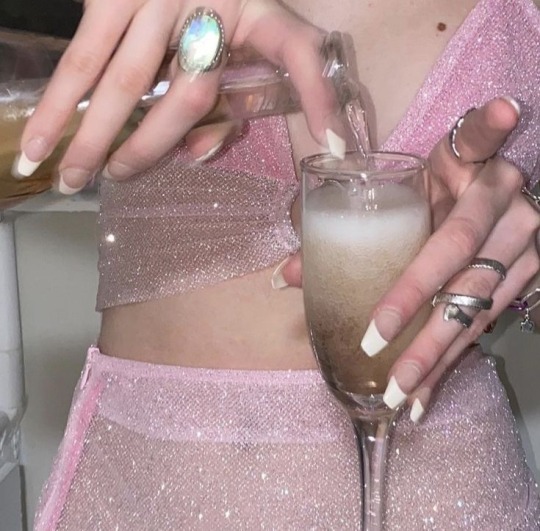






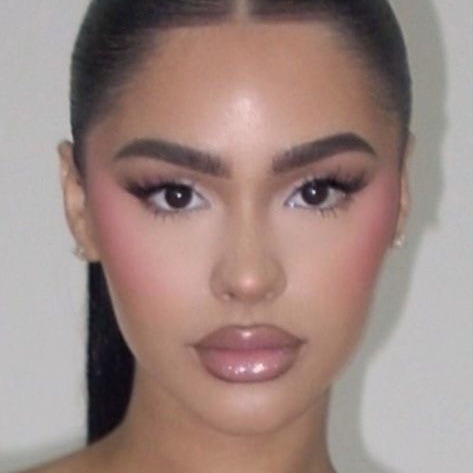
makeup trend archive: the barbie effect; inspired by sabrina carpenter 🎀
[dec 2023]
details: a lot of cool-toned blush that extends to the under-eye area, concealer that is 2-3 tones lighter, simple eye makeup with fluffy lashes, nude lips with a pink gloss
#here i analyze how makeup trends change and document it because i’m a freak#makeup trend archive#makeup trends#makeup#mua#beauty#girl blogger#it girl#girlblogging#fashion trends#fashion#trends#pink moodboard#pink aesthetic#pink#coquette#dolette#coquette aesthetic#dior#blush#dior blush#pastel pink#sabrina carpenter#lip gloss#cute#soft pink#hyper feminine#baby doll#dollete aesthetic#barbie
458 notes
·
View notes
Text
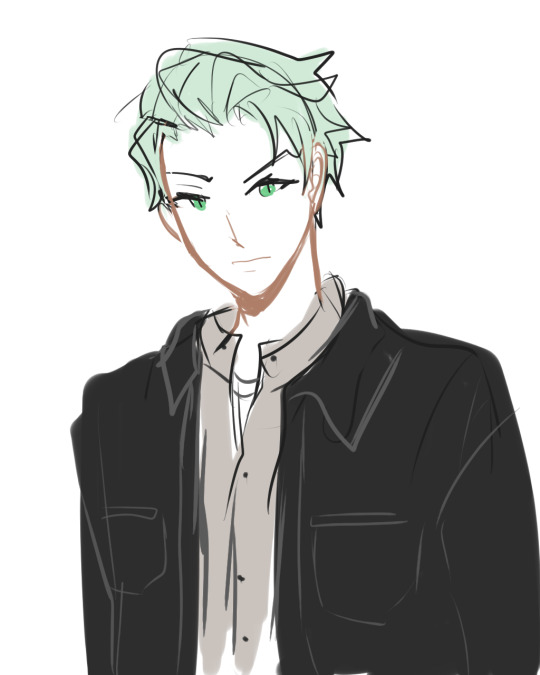
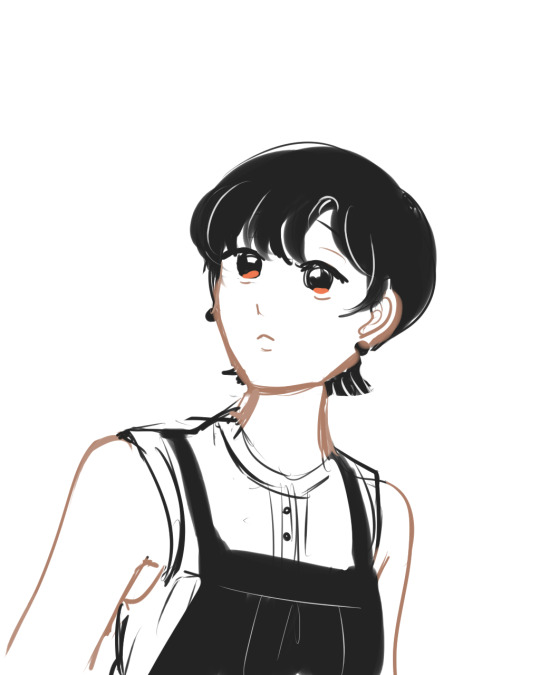
there's actual first date vibe in his look,
and i love it
.x.x
#twisted wonderland#twst#sebek zigvolt#twst yuu#twst mc#fanart#back then i only eyed on the jade and trey#and now i came back to it to see how did the sebek looks like; totally not disappointed#how time changes#i am thankful for this kind of post bcs i have no fashion sense of my own#him and deuce#they look like they really think hard to decide how to look at day#it's cute#i love the simplicity but well thought clothes he is wearing#it looks as if he will try to behave well that day#very tidy
478 notes
·
View notes
Photo


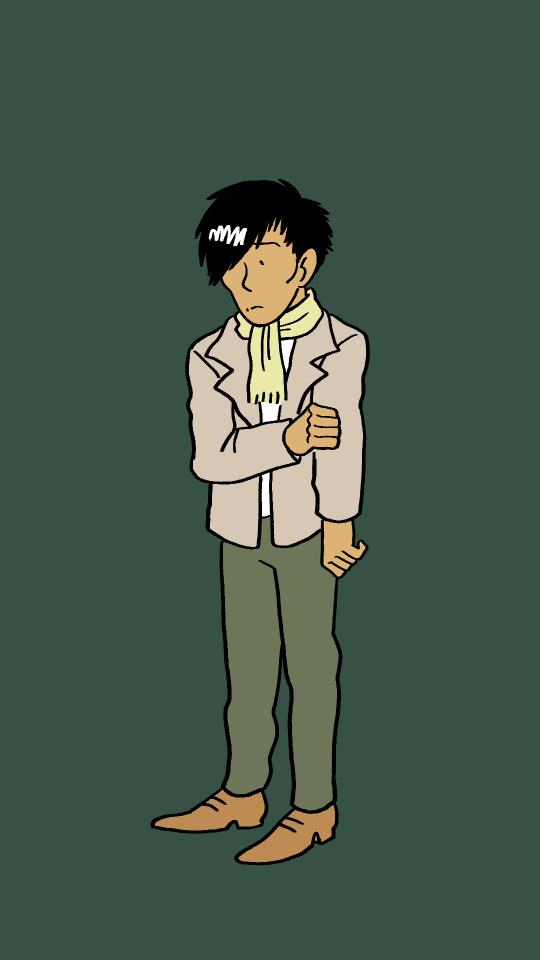
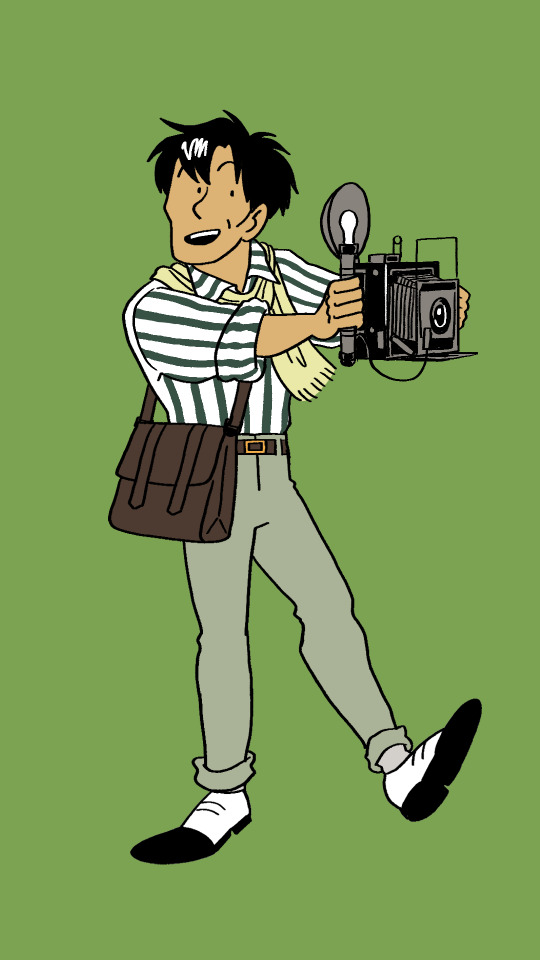
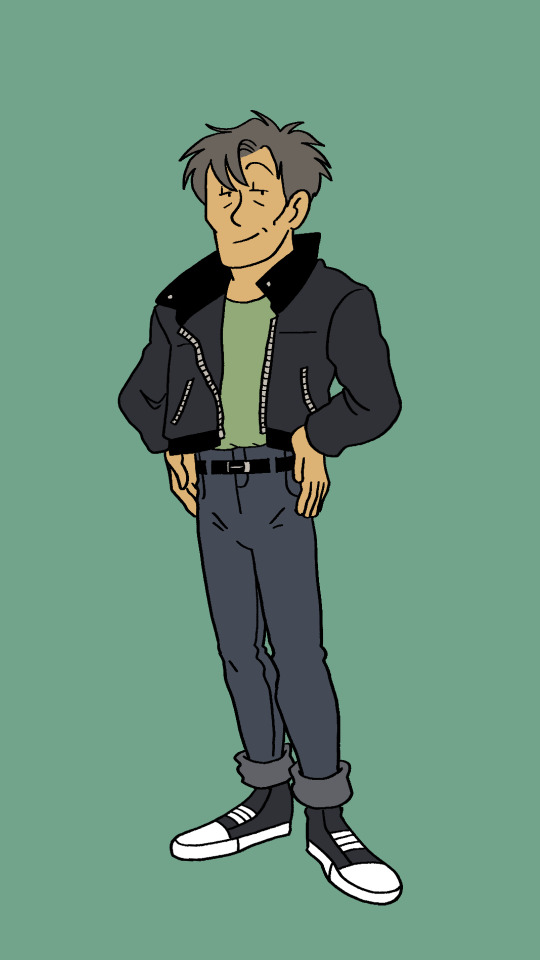

People have been asking for a Chang timeline post! Chang not only represents a turning point in the politics of the Tintin series, he also represents a sense of chronology in the otherwise floating timeline of the canon. While Tintin almost never discusses his past, Chang is a key part of his personal story in Tintin in Tibet.
I imagine him and Tintin being around the same age, with Chang being a few months younger.
Child - Chang had a happy early childhood being raised by his father and grandparents. He never mentions his mother when recounting his backstory to Tintin, so my main guesses are she either passed away or his parents separated before Chang was old enough to remember her. His father and grandparents taught him how to cook from an early age, and taught him the importance of solidarity and community, lessons Chang will hold onto the rest of his life.
Early canon - Chang is orphaned. This sudden loss causes him to act out. He turns to picking pockets and causing general mischief until an orphanage takes him in. Chang learns a lot of skills just to survive - he’s stealthy, he’s street smart and pretty decent at climbing. His experiences as a street kid taught him to be wary of authority.
The orphanage provides a brief period of stability until it is swept away in a flood. Until this point, Chang has felt pretty powerless in his life so just goes with the flow, so when Tintin drags him out of a river he doesn’t think twice about going along with him to break up a drug ring in The Blue Lotus. Going on this adventure with Tintin imbues him with a sense of empowerment and purpose he never felt before.
Student - The Wangs adopt him pretty quickly after he busts the drug ring with Tintin. It’s a sudden change he struggles to adapt to, with the Wangs being wealthy academics and Chang coming from a working class background there’s a significant culture clash.
Tintin leaves just as quickly and rarely contacts Chang, even as his journalism career takes off, leaving Chang lonely and heartbroken. Chang tries to send him letters but doesn’t know that Tintin moved out of Labrador Road.
Having missed out on education for a bit Chang struggles with school. He feels unworthy of the opportunities the Wangs try to provide him with and a part of him feels they only adopted him because they were dazzled by him taking down that drug ring, an achievement he increasingly feels he will never live up to again. He struggles with mental health issues, but finds solace in photography, his portfolio getting him a place at university despite his bad grades.
Young adult - In an attempt to try and help Chang’s mental wellbeing the Wangs decide to send Chang off to visit his uncles before he starts university, only for Chang to nearly perish in a plane crash in Tibet. Ironically, it’s this near death experience that shakes him out of it. Chang has a renewed enthusiasm for life, taking to travelling, dance and photography. Didi trains him in some basic martial arts so Chang can fend for himself.
Tintin makes an effort to stay in touch after having nearly lost Chang. The two repair their friendship, and Tintin has him stay at Marlinspike when Chang studies in Belgium for his second year of university. By the time Chang comes around, he’s had a growth spurt and has been working out - Chang is pretty haunted by his skeletal state from his near death experience in Tibet, so has been making an effort to recover.
After helping Tintin with a case, Tintin gets him a job at his paper as his photographer. Being Chinese he faces challenges in the workplace, and he uses his charm to be as personable as possible. Unlike Tintin, he frequents quite a few staff parties, and ends up pretty popular!
A couple of years later, Chang tries to unionise the staff at the paper. He and Tintin are outed as a couple and the two of them are fired.
Middle aged - After fighting fascists with the Marlinspike team during WW2 Chang and Tintin settle down in Belgium, with Chang scraping out some freelance photography work and a part time job at a portraiture studio. War in China causes them to lose contact with his adopted family.
While Tintin grows more cynical, Chang accepts the chaos of the world and mellows out a lot. He tries to be a supportive partner and makes extra effort to stay in touch with his uncles and cousins.
Elderly - Chang uses his skills in photojournalism when he gets involved in political activism. He and Tintin are finally able to reunite with Didi and his children in the 70s.
#fanart#tintin#adventures of tintin#chang#photoset#headcanon#historical fashion#death mention#homophobia mention#racism mention#my favourite design by far is the elderly one lol#look at the bumbag#look at the colourblock jacket#tinchang
946 notes
·
View notes
Text

diversity win your spam emails are queer
#deltarune#spamton#swatch#art#doodles#pansexual#bigshot spamton#stupid joke ive had sitting in my head for months whjbfghbjdfg. artist brain override gay brain (me too). good for him though!!#me refilling my printer ink tanks: omg my printer is pan... soooo coool....#and dont forget that he owned the mettaton dress of transgenderism either. arguably this has the trans flag colors too#wait theres a car joke here also. TransAm? more like TransPan. haha nice#+ his glasses fit the theme so Bonus Spam + i changed my 90s swat a little again#they're just gonna be different every time i draw them. for funsies. and thats fine. i havent even posted 90s queen yet SMFH !!!!!#there's something to be said about metaphors in their 90s fashion choices. something something more colorful design back then#something something not hiding their eyes yet something something Learned A Lesson....#you could read that a certain way. or perhaps not#obligatory 'my swatch uses they them' tag#obligatory 'fine to tag as ship if you want idc' tag#obligatory 'oh god i swear im trying so hard to draw and post more' tag#i saw a tag on a post from like 2019 that said 'man i only posted 9 times last month!' and im like. god. i wish i could post 9 times a#month Now???? honey you had a big storm comin#i just keep starting things i dont have the energy to finish. except for a silly gay color profile joke apparently#im sure the Smoke Smell goes reeeal good with the Dumpster Smell btw.
1K notes
·
View notes
Photo
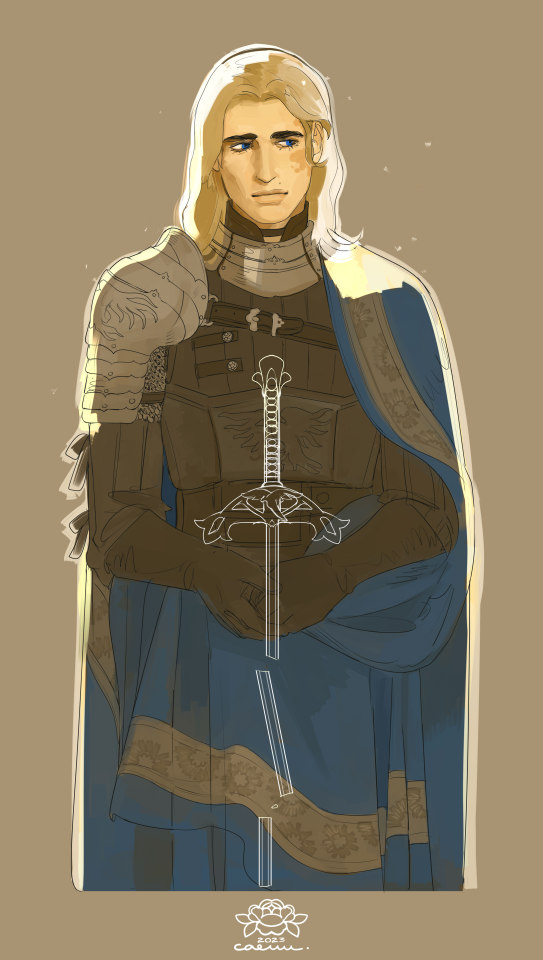
[---]
#aesthetic#fashion#dnd#Dungeons and Dragons#ocs#he has new blorbo potential..........#but will i be able to play him :^)#or also how many times will i change the design before i can play him
2K notes
·
View notes
Text

I swore to myself I'd never redesign the black mask fit because I think it's perfect the (horrible) way it is but then I got bored and had an idea.
#goro akechi#persona 5#p5#akechi goro#p5r#persona 5 royal#cleb art#look! a wild character design#i lovethe og black mask tho. every time someone says he looks bad i add another pile of dirt to the hill ive chosen to die on#“hereward fit” is less of that specifically and more#a part of a long drawn out au/story that exists in p5 postcanon in my head#and i dont think akechi would have that outfit he wears in canon when he's like an adult#& has done some level of development past the horrible mess of a person he is in game#i think if the metaverse continued to exist in some form#or like if any pf the thieves joined the shadow ops all of their outfits would change#as their perceptions of themselves grew and changed#not joker tho joker would b the same joker's already reached his ideal sense of fashion
1K notes
·
View notes
Text

❦
#I am sorry for changing his design a little but I just couldn't force myself to draw the fedora.....#he's my cutiepie with questionable fashion taste alright#also matching to my previous aoba art hehe#sei#dmmd#dramatical murder#fanart#digital art#my art
362 notes
·
View notes
Text
I honestly love the clothing styles of each of the turtles in this show and I love how these styles really incorporate their personalities as well.
Like, obviously Donnie has the best sense of style, yeah? Think that’s something pretty agreed upon here. Everything we see him put together is very meticulously crafted and clean. That goes with his personality because Donnie is a very meticulous person in general, and he knows what he likes very, very well, and knows how to flaunt it in turn. Him commenting on colors he enjoys or disapproving of outfits that the others see no problem with also shows how he just generally has an eye for this kind of thing. He doesn’t just know what looks good on himself, but also what looks good on others - and I think this ties into his love of gift giving too. Donnie also has a flair for making sure that his things have his “mark” on them, and his clothing is no exception. All that he wears and how he wears them screams “Donnie.”
Mikey is really fun because his styles are honestly a pendulum between super simplistic and incredibly out there. And often, you’re going to see a lot of color or patterns to both. And in my opinion I think that all reflects really well on Mikey’s character - he’s got a colorful personality but even more than that he’s incredible sure of who he himself is. Mikey’s style, I feel, is less what looks good as clothes and more what sparks joy in Mikey himself. His bright stickers he wears are a testament of that! He’s comfortable in his own skin and his style reflects this perfectly, whether he goes for a more out-there look or a more toned down one.
Now, for Leo. Okay, I think I’m actually in the minority here I feel because Leo’s style isn’t really that bad? Hear me out- if you actually look at what he wears, try taking out, like, one accessory. Suddenly, that outfit works! He even manages to put together many good outfits in the series, but his “bad” ones are the ones that tend to stand out, alas (just like how his mistakes tend to be big ones oop-) Basically, my personal look at him is not that he’s inept at styling at all, but that he has a “too much” gene. And like everyone else, this sense of style is completely like him, too. Going too far to impress when all he needed to do was slow it down some to think things through. (And funnily enough, a lot of his outfits take random aspects from his brothers too - “nothing without them” huh?)
For Raph, I feel bad for him since pretty much all of his clothes are inevitably going to be ripped, but he makes them work pretty much each time. Like Leo, Raph tends to go more sporty with his looks, but I also noticed that his stuff often goes in that in between of comfy, cool, and cute. His pajama suit in particular comes to mind in terms of “cute” as it’s more something you’d see younger children in rather than older kids, and I think it can be a subtle nod to the fact that for all Raph tries to seem older, he’s still just a kid too.
I could probably go on, but these are just all off the top of my head - I love how the boys’ personality’s come out in so many different ways.
#rottmnt#rise of the teenage mutant ninja turtles#rottmnt headcanons#rise donnie#rise leo#rise mikey#rise raph#I love fashion actually#if you’re wondering where this came from it came from me watching hours of outfit creation vids#but yeah! I honestly could probably go more into it#but I’m going off my memory for the most part rip#Leo in particular makes me sad because I disagree with like 99% of the fandom about his fashion sense LOL#I don’t think it’s bad but it’s def not close to Donnie level#Donnie is his own category#Leo though he’s not just jerseys and ripped sleeves#he wears full eye makeup as a granny and kills doing it#his pirate costume was very well put together imo#even his regular weird frog like disguise is perfectly fine when you get rid of the goggles#I ALSO don’t think Raph’s style is bad either#my boy has more difficulty with clothes since he’s limited to the stretchier stuff but like#he’s got good style!!#I’m def looking more into this all than necessary but#watch me come back to this and change it like fifty times#if you’re wondering what I mean about Leo’s outfits taking from his brothers#look at Raph’s standard disguise (the one they go out to play basketball with)#ripped sleeves and a backward cap#one of Leo’s main outfits in The Clothes Don’t Fit the Turtle?#ripped sleeves and backwards cap#incedentally these borrowed aspects actually hinder his overall look!#his outfit without them is more HIM y’know? which says a lot about allll their individual styles
206 notes
·
View notes